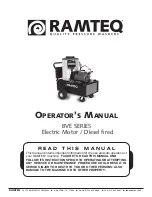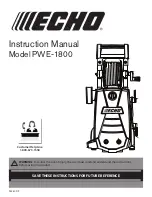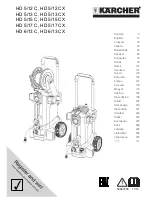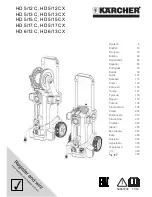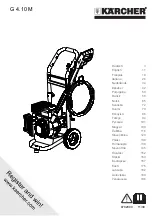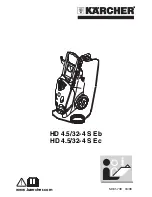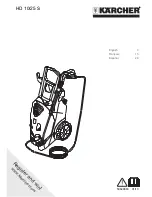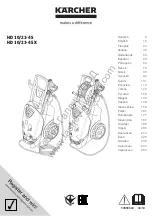
GB 2
BEFORE USING THE WASHING MACHINE
1.Removing the packaging and inspection
• After unpacking, make sure that the washing
machine is undamaged. If in doubt, do not use the
washing machine. Contact After-Sales Service or
your local retailer.
• Check that the accessories and supplied parts are
all present.
• Keep the packaging materials (plastic bags,
polystyrene parts, etc.) out of reach of children,
as they are potentially dangerous.
• If the appliance was exposed to the cold prior to
delivery, keep it at room temperature for a few
hours before operating.
2.Remove the transport bolts
• The washing machine is fitted with transport
bolts to avoid any possible damage to the interior
during transport. Before using the machine, it is
imperative that the transport bolts are removed.
• After their removal, cover the openings with the
4 enclosed plastic caps.
3.Install the washing machine
• Install the appliance on a solid and level floor
surface.
• Make sure that all four feet are stable and resting
on the floor and then check that the washing
machine is perfectly level (use a spirit level).
• In case of wooden or so-called “floating floors”
(for instance certain parquet or laminate floors),
place the appliance on a 60 x 60 cm sheet of
plywood at least 3 cm in thickness which is
secured to the floor.
4.Water inlet
• Connect the water supply inlet hose in
accordance with the regulations of your local
water company.
• Water inlet:
Cold water only
(if no other information on
your programme chart)
• Water tap:
3/4” threaded hose
connector
• Water pressure
(flow pressure):
100-1000 kPa (1-10 bar).
• Use only new hoses to connect the washing
machine to the water supply. Used hoses must
not be used and should be discarded.
5.Drain
• Connect the drain hose to the siphon.
• If the washing machine is connected to an
integrated drainage system, ensure the latter is
equipped with a vent to avoid simultaneous
loading and draining of water (siphoning effect).
6.Electrical connection
• Electrical connections must be carried out by a
qualified technician in compliance with the
manufacturer’s instructions and current standard
safety regulations.
• Data regarding voltage, power consumption and
protection requirements is given on the inside of
the door.
• The appliance must be connected to the mains by
means of a socket with an earth connection in
accordance with current regulations. The
washing machine must be earthed by law. The
manufacturer declines all liability for damage to
property or injury to persons or animals, deriving
directly or indirectly from failure to observe the
directions.
• Do not use extension leads or multiple sockets.
• Before any maintenance on the washing machine
disconnect it from the mains supply.
• After installation, access to the mains plug or to
disconnection from mains supply must be
ensured at all times via a double-pole switch.
• Do not operate the washing machine if it has
been damaged during transport. Inform the
After-Sales Service.
• Mains cable replacement is only to be carried out
by After-Sales Service.
• The appliance must only be used in the
household for the prescribed uses.
Minimum housing dimensions:
Width: 600
mm
Height: 825
mm
Depth: 600
mm
30110447GB.fm Page 2 Thursday, May 10, 2007 12:35 PM
Black process 45.0° 100.0 LPI















